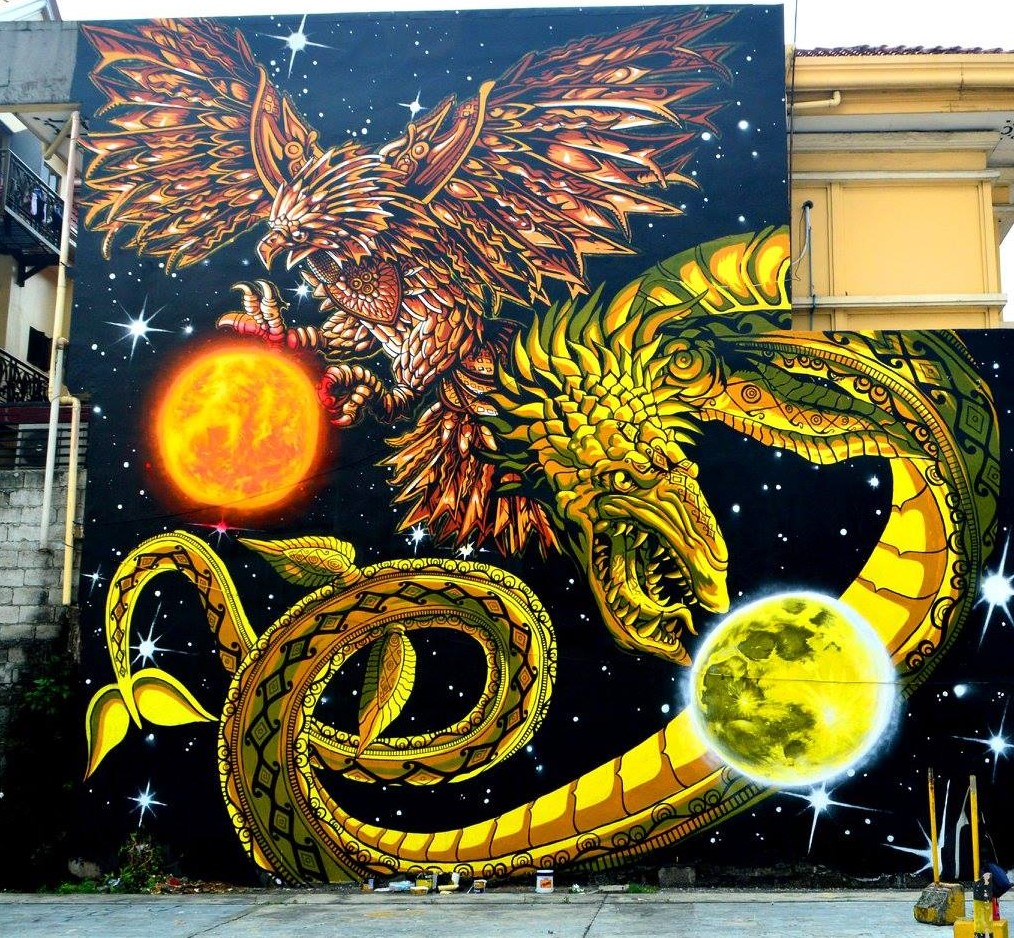Mythical Chinese dragons and bakunawa

I am usually among those who converge along the streets of Binondo in celebration of Chinese New Year for the special performances (Dragon/Lion dances), cuisine, lucky charms, prosperity fruits, and boxes of “tikoy.”
2024 is the Year of the Wood Dragon, beginning on February 10, 2024 while other Dragon years include 2036, 2024, 2012, 2000, 1988, 1976, 1964, 1952, 1940.
In Chinese culture, the Dragon holds a significant place as an auspicious and extraordinary creature, unparalleled in talent and excellence. It symbolizes power, nobility, honor, fertility, luck, wisdom, and success.
The appearance of a dragon is both fearsome and bold but it has a benevolent disposition, and it was an emblem to represent imperial authority.
Dragon dance is a form of traditional dance and performance in Chinese culture often seen during festive celebrations.
The dance is performed by a team of experienced dancers who manipulate a long flexible giant puppet of a dragon using poles positioned at regular intervals along the length of the dragon.
Believed to bring good luck to people, the longer the dragon is in the dance, the more luck it will bring to the community.
The dance team simulates the imagined movements of this river spirit in a sinuous, undulating manner that traditionally symbolize the power and dignity of the dragon.
The local version of Chinese dragon in Philippine mythology is the bakunawa, a sea serpent-like dragon believed to live deep in the oceans and emerge to devour the moon or sun, leading to the celestial phenomena of eclipses, earthquakes, rains, and wind.
The name “Bakunawa” is derived from the Cebuano and Bisaya term “baku” (meaning “to cover”) and “nawa” (meaning “causer”). Thus, Bakunawa is often referred to as the “Moon-Eater” or the “Eclipse Bringer” due to its role in causing lunar eclipses.
The bakunawa is usually depicted with a characteristic looped tail, a single horn on the nose, a mouth the size of a lake, a red tongue, whiskers, gills, small wires at its sides, and two sets of wings, one is large and ash-gray while the other is small and is found further down its body.
The movements of the bakunawa served as a geomantic calendar system for ancient Filipinos. The tale of Bakunawa has its roots in the pre-colonial beliefs and practices of the indigenous people that had a profound connection with nature and the elements, often attributing natural phenomena to the actions of mythical beings.
The story of Bakunawa is a compelling metaphor for the cycle of life and death, emphasizing the inevitable passage of time and the ever-changing nature of existence.
A mural of the Bakunawa can be found in a parking lot wall near the Manila Cathedral in Intramuros.
The dancing dragons during Chinese New Year is a major attraction in Binondo which is considered as the world’s first and oldest Chinatown.
Binondo was established in 1594 as a permanent settlement for Chinese immigrants, particularly those who had converted to Catholicism and intermarried with indigenous Filipinos.
It was positioned near Intramuros, but across the Pasig River, so that colonial rulers could keep a close eye on their migrant subjects amid fears of an imminent invasion from China.
In the years that followed, Binondo became the first stop for Chinese immigrants who arrived in Manila in search of a new life. It is the foundation of the Filipino-Chinese community amidst multiple occupations by our colonizers.
At present, the number of Filipino citizens who happen to be ethnic Chinese is not more than 1.2 million, or 1.2 percent of the total population of the Philippines.
Teresita Ang See of the Chinese-Filipino NGO Kaisa Para Sa Kaunlaran (KAISA) said in a paper that historically, there have been Chinese immigrants to the Philippines since the era of Spanish colonial rule.
However, the contemporary influx of Chinese immigrants into the Philippines started in the 1970s, especially after the establishment of diplomatic relations with China in 1975. It escalated in the 1980s with the market reforms instituted by Deng Xiaoping and the opening up of China to foreign markets.
The term “Tsinoy” was created by KAISA in 1992 as an alternative to “intsik,” which is quite harsh to the Tsinoy ear. Tsinoy is Tsinong Pinoy or Chinese Filipino, not Filipino Chinese (Filipino is the noun, Chinese is the adjective).
Ang See stressed that while the Tsinoys may recognize and take pride in their ethnic cultural heritage, they are simultaneously assimilated into all aspects of Philippine socio-economic and political life.
For the Tsinoys, Ang See added, their loyalty is first and foremost to the Philippines.
This sentiment is best encapsulated in the KAISA credo, which states that “Our blood may be Chinese, but our roots are deep in Philippine soil and our bonds are with the Filipino people.”
(Peyups is the moniker of University of the Philippines. Atty. Dennis R. Gorecho heads the seafarers’ division of the Sapalo Velez Bundang Bulilan law offices. For comments, e-mail info@sapalovelez.com, or call 0917-5025808 or 0908-8665786.)
ALSO READ
Ukuleles, bamboo instruments and kudyapi reverberate in CCP Pasinaya 2024
Dances of the Babaylans in honor of the Sto.Nino
Saving the asin tibuok of Bohol
Search for fireflies in Ifugao rice terraces
Disclaimer: The comments uploaded on this site do not necessarily represent or reflect the views of management and owner of Cebudailynews. We reserve the right to exclude comments that we deem to be inconsistent with our editorial standards.
